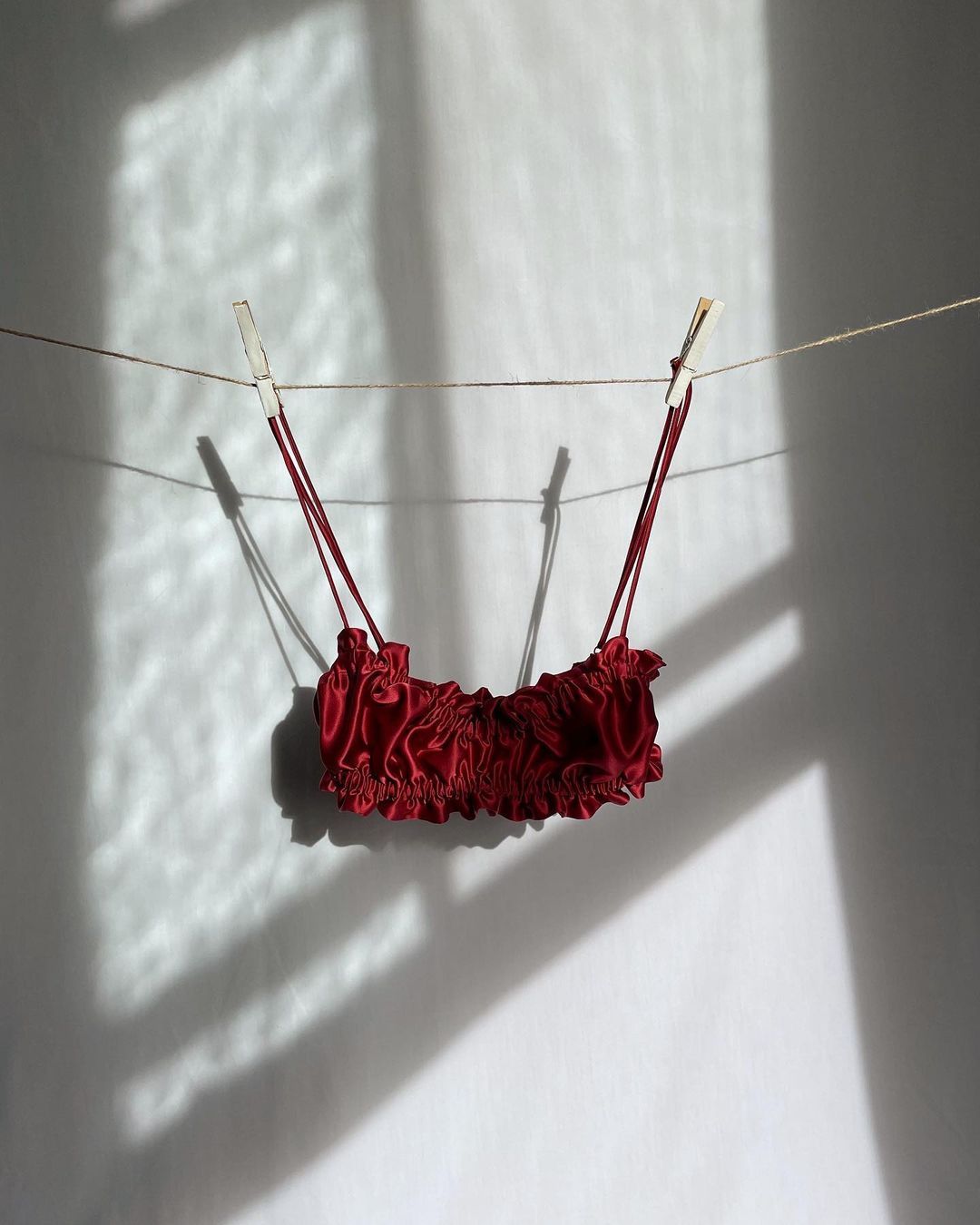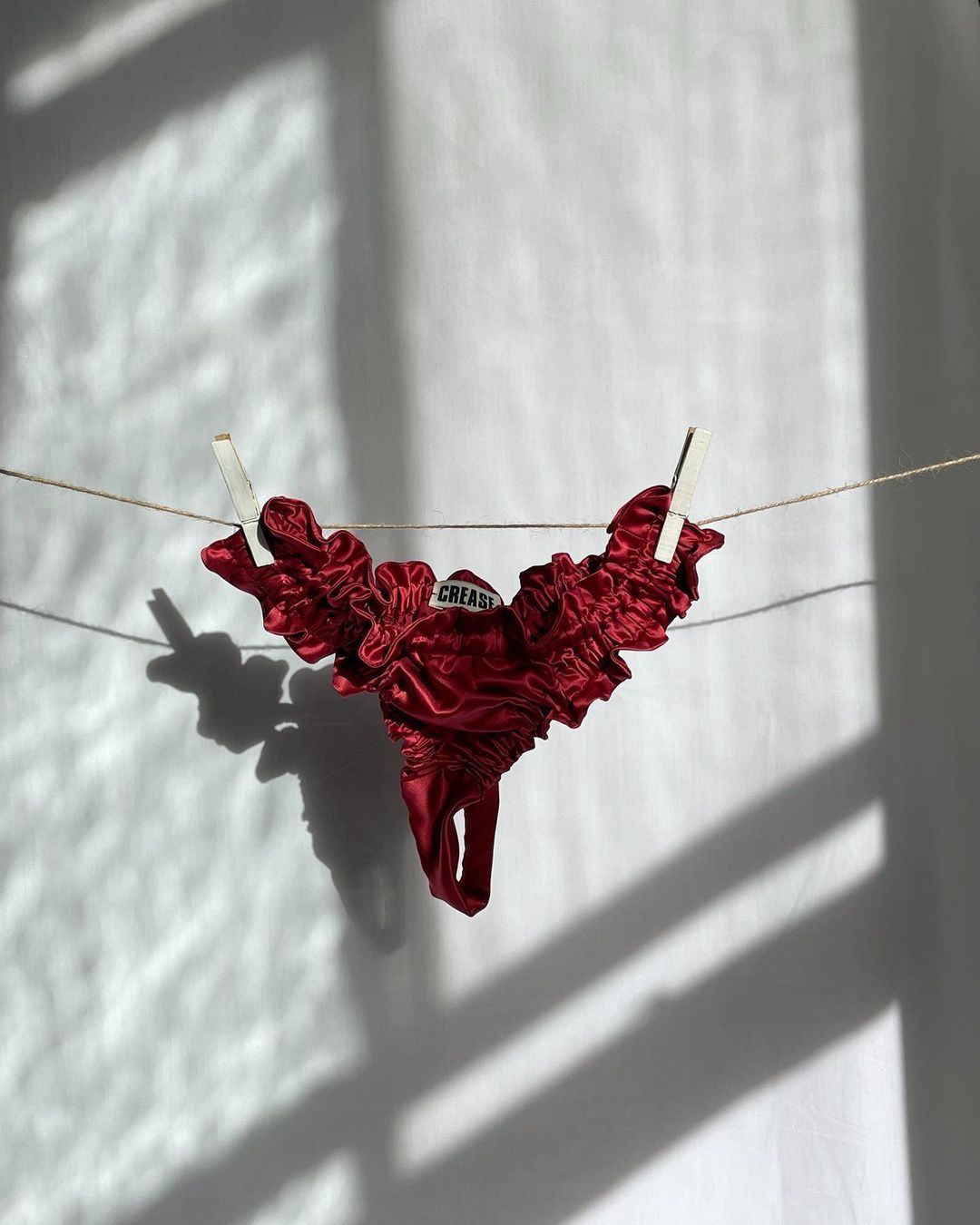Climate change stands as the pressing concern of our time, with the fashion industry significantly contributing to its damage. Annually, 100 billion garments are manufactured, yet a staggering 92 million tonnes end up in landfills, amplifying global carbon emissions and CO2 levels, as unveiled by an Earth.org study. While advocating for second-hand shopping is straightforward, it's not a practical solution for lingerie consumption.
Lingerie is one of the most intimate and personal garments you can own. Lingerie should offer the right fit and support where you need it most. Additionally, it can double as fashion pieces, becoming the focal point of an outfit. Most people choose to purchase their lingerie new for sanitary reasons, so the industry must convert to sustainable construction methods and materials in order to have a positive impact on the environment.


Images courtesy of @c_r_e_a_s_e via Instagram
Co-founder of Crease Studios Rosemary Lambert emphasizes the importance of reducing deadstock and textile waste, known for their made-to-order lingerie crafted at a higher standard. Co-founder Kate Donald highlights the duos approach when launching new collections, "We produce a very small number of units, around 50 across all sizes, but only if we expect consumer engagement, this is to avoid any deadstock.”
Donald mentioned, "There are always new sustainable fabric alternatives emerging, Tencel is a good one that we have been keeping an eye on.” Tencel is a brand name for a set of fibers called lyocell and modal, the fibers are known for being very soft and is often used in sustainable fashion. Crease Studios opts for locally sourced silk from a Kent farm, employing solely organic, natural fibers to guarantee their garments maintain exceptional sustainability standards.Lambert explains that there is an issue regarding fabrics when constructing sustainable lingerie. “Lingerie needs to stretch, and natural fibers don't stretch.”
Priya Downes, founder of sustainable underwear brand Nudea said, “It's hard to build bras from 100% natural fabrics as generally elastane is needed to provide stretch and fit.” Nudea’s bestseller is the Boss Bra, “It's a universal t-shirt bra and suits all body types,” said Downes.

According to Downes, lingerie ranks among the leading contributors to fashion waste, with consumers frequently purchasing low-quality, inexpensive underwear that ends up in landfills within a year. These items lack durable materials and longevity.
Freya Radnedge, studying Fashion Contour at London College of Fashion, highlights the meticulousness involved in crafting sustainable garments: durable locally sourced fabrics, stronger threads, and precise construction, often tailored to order. "Sustainability starts with the conception of the garment,” explains Donald.
The urgency for sustainable fashion has grown as climate change accelerates. According to Earth.org, the fashion industry contributes to 20% of global wastewater, largely due to overproduction driven by consumer demand. Fast fashion brands now produce twice as many clothes as they did in 2000, leading to 2.6 million tonnes of returned garments ending up in US landfills in 2020. Ill-fitting clothes contribute to this waste when consumers discard or return them. Lingerie, often non-returnable, adds to this issue. Brands like Crease Studios are combatting textile waste by offering made-to-order lingerie sets tailored to each consumer, aiming to reshape these alarming waste statistics.
There is an enormous struggle around costs and profit margins within the sustainable lingerie industry. “Sustainably sourced silk costs 10 times more than regular silk,” said Lambert.

As an independent business, Crease Studios said one of its largest problems are the costs because it means the price point of their garments increases. “Consumers have gotten used to exploitation being the norm,” said Donald, "Which is why consumers are shocked when seeing high prices for something that has a cheaper, fast fashion alternative." Co-founders of Crease Studios Lambert and Donald said that identifying price points requires precise consideration, saying their “profit margins are small.”
As a potential future creator for the sustainable lingerie industry, Radnedge said, “sustainably sourced materials, like silk and bamboo, do cost considerably more than regular materials, however bras require little fabric to construct.” Lambert said that higher cost for sustainable materials, “ensures people along the process are being paid fairly.”
“There is a heavy greenwashing within this industry,” explained Donald. “Many brands may not realise lot of fabrics have micro plastics, which makes it non-sustainable."

“Sustainability is becoming a necessity, so consumers must accept that they will be paying higher prices for lingerie,” said Radnedge. In order to make a noticeable impact on C02 levels and reduce the rate of climate change, the fashion industry needs to acknowledge its position and how damaging it is. As the largest sector responsible for creating most landfill, the lingerie industry must adopt more sustainable creation techniques and materials, and consumers must accept the changes this brings. Sustainable lingerie is the future, but without any acknowledgement from fast fashion brands, the sustainable lingerie industry will not move at a viable, eco-conscious pace.

